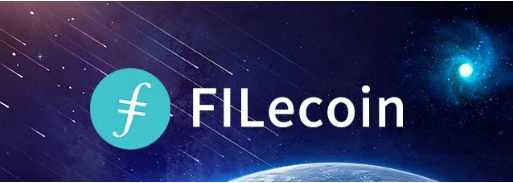There are two markets in the Filecoin economic model: storage and retrieval markets. There are customers and participants in the two markets. In addition to the above two roles, there are developers and investors in the Filecoin economic model ecology. In the storage market, participants can get rewards in three ways: one is transaction fees, the other is block rewards, and the third is Networking Message Transaction Fees. Transaction fees and network transaction acceleration fees are paid in advance by customers, and block rewards are generated by the system. The difference between Filecoin and the Bitcoin network is mainly in the nature of the service provided: storage is a long-term service, and Filecoin needs to maintain the stability of the network for a long time, rather than the Bitcoin network where participants can freely enter and exit. The storage market also introduces a pledge mechanism, which is a penalty mechanism to ensure that the data of Filecoin storage market customers will not be lost.

In each storage agreement between users and participants, the storage market stores the data provided by the customer in the network, which is called a sector. Each added sector will contain the content of the stored file and the promised storage duration to ensure that customers can freely use their own stored data during the agreed storage duration. When adding a sector to the Filecoin network, participants need to pledge a locked capital. Locked funds consist of two parts: their own FIL tokens and part of the block reward. If he goes offline during the promised storage period, he will lose part of the locked funds. If the storage behavior is completely stopped, he may lose all locked tokens. Locked funds will be unlocked after fulfilling the storage agreement, and all funds can be recovered after the lock-up period ends. This means that FIL needs to be pledged to obtain block rewards, but FIL tokens are gradually released linearly.
In the Filecoin consensus, the block generation adopts the expected consensus (EC) model, which refers to the election of one or more participants in each round to create a new block. The probability of the participant winning the election and the current storage of the participant Ability is directly proportional. To prove. Space-time proof can use proof chains and timestamps to prove that participants store data within a certain period of time. Even if the verifier is not online, it can verify that participants have generated a proof chain during this period of time in the future, effectively preventing temporary data generation attacks. The copy certificate can prove that the data has been successfully created in a specific sector. And guard against three kinds of attacks: one is witch attack; the other is external data source attack; the third is generation attack. Proof of replication avoids allowing participants to use different methods to make their own storage data less than the promised storage data in order to obtain additional rewards.

Participants' rewards will be released linearly, and the output will be halved every 6 years. At present, Filecoin's storage capacity has exceeded 1 EB, and now it has reached 1.31 EB, and the number of active participants is 872. Although the Filecoin browser shows that the participants are distributed in Asia, Europe, North America, South America, Oceania and Africa, it is not difficult to see from the labeling and disclosure information that the participants with the most capacity are Chinese participants. In terms of effective computing power distribution, there has not yet been a centralized situation like Bitcoin mining pools.
It is easy to see that the Filecoin market is now hot, and the price of FIL is also related to it. But in the initial design, the supply, demand and price of FIL were regulated by market services. Participants need to pledge FIL to obtain block rewards, and FIL tokens are gradually released linearly, so it is expected that the supply side will grow slowly and the growth rate will decrease exponentially. On the demand side, due to the gradual increase in service demand, it is determined that all participants in the market must continue to purchase FIL.

In order to maintain the stability of service prices, regardless of the rise or fall of FIL, the price of storage and retrieval transaction fees needs to be anchored in legal currency or stable currency. When the price of FIL increases, customers will pay less FIL units of transaction fees and network acceleration fees, and the proportion of participant block rewards to revenue will increase. When the price of FIL drops, customers will pay higher FIL unit transaction fees and network acceleration fees, and the proportion of participant block rewards in revenue will decrease. Assuming that only service demand factors are considered, when the price of FIL increases, the rate of customers buying FIL in the secondary market will slow down, and when the price of FIL decreases, the rate of customers buying FIL in the secondary market will increase, achieving the function of regulating the secondary market.
At present, the storage market of the Filecoin network is not only participated by customers and participants. In the future, whether the market mechanism in Filecoin will work, whether there are real users to use it, let us wait and see.
Investors who want to learn more about IPFS and Filecoin can follow the official website of the IPFS China Community: http://ipfs.cn and the official website of Space Cloud Technology: http://yunos.io